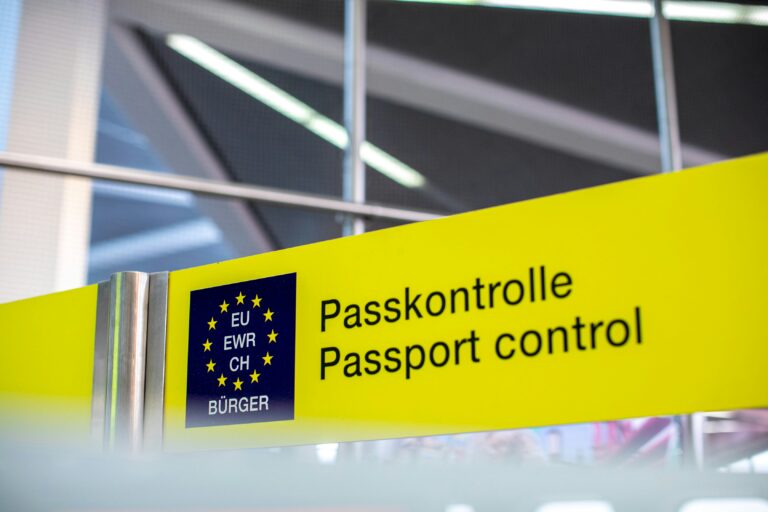
EU Entry/Exit System (EES) 2025: A Guide for Event Planners and Business Travellers
By The DMC Collective – Event Insights – October 2025 Expert commentary by Lara Schmitt, Senior Travel Advisor, The DMC Collective
Quick take: From 12 October 2025, the EU begins rolling out the Entry/Exit System (EES). First entries involve one-time biometric enrolment (live facial image plus four fingerprints). Expect a progressive switch-on over roughly six months and plan extra time on first arrival.
Contents
- What Is the Entry/Exit System (EES)?
- Why EES Matters for Events and Business Travel
- Timeline and Roll-out
- Who Must Enrol (and Common Exemptions)
- What Travellers Need to Do
- Where and How Enrolment Happens
- Do I Need a Biometric Passport?
- How Long It Takes and Connection Strategy
- All EU Countries Where EES Applies
- Impact on Itineraries, Conferences and Exhibitions
- The Event Planner’s Playbook (Lara Schmitt’s Tips)
- Privacy and Data Basics
- FAQ for Delegates
- About The DMC Collective
What Is the Entry/Exit System (EES)?
The Entry/Exit System is the EU’s digital border control for non-EU/Schengen visitors on short stays (typically up to 90 days in any 180).
On the first entry after launch, border control captures a live facial image and four fingerprints and creates a digital record of entry. On departure, exit is logged too. Over time, this replaces manual passport stamping at external Schengen borders.
What EES records on first entry:
- Traveller identity (from the passport)
- Biometric identifiers (face and fingerprints)
- Time and place of entry (and exit later)
What EES does not do:
- Replace visas or residence permits
- Track day-to-day movements inside Schengen
- Remove border officers’ discretion to ask questions
Why EES Matters for Events and Business Travel
For conferences and exhibitions, the biggest practical change is throughput at first entry. Enrolment takes longer than a simple stamp, so queue dynamics change—especially during the first months while travellers and airports adjust. After enrolment, repeat trips are typically quicker.
Lara Schmitt says: “Treat the first EES entry like a new airport security step. Clear instructions to delegates plus a little time buffer equals a calm, on-time programme.”
Timeline and Roll-out
- 12 October 2025: EES starts at external borders (air, sea, rail, road) with a progressive activation
- Approximately six-month ramp-up: not all crossing points switch on day one
- By April 2026: passport stamping expected to be fully replaced by EES across participating borders
Who Must Enrol (and Common Exemptions)
Must enrol:
- Travellers on non-EU/Schengen passports making short stays for business or tourism (for example, USA, UK, Singapore, China, Korea, India, Japan)
Common exemptions:
- EU/Schengen citizens
- Holders of valid residence permits or long-stay visas (checked under different rules)
- Children under 12 (no fingerprints; a live facial photo may still be taken)
What Travellers Need to Do
Bring:
- Valid passport (biometric not required; see below)
- Usual supporting documents if asked (proof of accommodation, return ticket, insurance, funds)
At first entry:
- Provide a live facial image and four fingerprints at the border (unless exempt)
- Follow kiosk or officer instructions (remove hats and sunglasses; keep fingers clean and dry)
Record validity:
- The EES record typically remains valid for three years; if you re-enter within that period, border control usually performs fast biometric verification rather than full re-enrolment
Where and How Enrolment Happens
- At the first external Schengen border you cross after launch—usually your arrival airport in Europe
- Airports and ports will use self-service kiosks or tablets and/or officer-supervised capture stations
- On UK–EU rail and sea routes, checks can occur at juxtaposed controls before departure from the UK (for example, St Pancras, Dover, Folkestone)
Do I Need a Biometric Passport?
No. EES does not require an e-chip passport.
However, a biometric passport may allow use of automated or self-service lanes where available, which can be faster.
How Long It Takes and Connection Strategy
- Enrolment step: often around one to three minutes per traveller in smooth conditions
- Queues: variable—expect longer lines in the early months, especially at major hubs and peak waves
- Connections: for the first EES entry, add 30–60 minutes to your usual allowance; avoid tight layovers and “land-and-start” agendas
Lara’s rule of thumb: “For VIPs and speakers, protect 90 minutes from scheduled landing to hotel arrival during the initial roll-out.”
All EU Countries Where EES Applies
EES applies at the external borders of EU countries that participate in the Schengen border regime. These EU Member States apply EES:
- Austria
- Belgium
- Bulgaria
- Croatia
- Czechia (Czech Republic)
- Denmark
- Estonia
- Finland
- France
- Germany
- Greece
- Hungary
- Italy
- Latvia
- Lithuania
- Luxembourg
- Malta
- Netherlands
- Poland
- Portugal
- Romania
- Slovakia
- Slovenia
- Spain
- Sweden
Note:
- Ireland and Cyprus do not apply EES
- Associated non-EU Schengen countries where EES also applies: Iceland, Liechtenstein, Norway, Switzerland
Impact on Itineraries, Conferences and Exhibitions
- First-time friction: delegates’ first EES entry will take longer; subsequent trips are faster
- 90/180-day compliance: EES automates short-stay tracking across all participating countries—frequent travellers must track days carefully
- Airport selection: for large groups, favour major hubs with ample kiosks and staffing during the ramp-up
- Programme design: build margin between landing times and the first on-site commitment (registration, rehearsals, executive sessions)
- Ground operations: align shuttles and meet-and-greet teams with live border conditions
The Event Planner’s Playbook (Lara Schmitt’s Tips)
1) Pre-event
- Map arrival flows by airport, port and rail; confirm EES readiness
- Issue a one-page delegate brief (use the FAQ below)
- Stagger arrivals for groups and VIPs; avoid simultaneous peaks
- Protect buffers in agendas; no “land-and-speak” slots
- Check fast-track or group-lane options with airports and handlers
2) Arrival day
- Place meet-and-greet staff where EES queues exit into baggage halls
- Monitor live wait times and flex shuttle dispatch
- Provide clear wayfinding from border control to baggage and pickup points
3) Post-event
- Collect wait-time feedback per flight and wave; refine hub choices and timings for future editions
- Update SOPs with EES checklists and realistic buffers by city and airport
Lara Schmitt says: “Over-communicate the basics: passport ready, clean fingers, no hats or sunglasses at capture. Small details shave minutes off queues when multiplied by 200 delegates.”
Privacy and Data Basics
- EES stores identity and biometrics for border control purposes under EU data-protection rules
- Records are typically retained for three years (longer if exit data is missing)
- Refusing biometric capture can lead to refused entry
FAQ for Delegates
Do I need to apply in advance?
No. EES enrolment happens at the border on arrival.
Will my passport still be stamped?
Passport stamping is being phased out as EES reaches full operation.
Is a biometric passport required?
No, though it can help with self-service lanes where available.
How long does enrolment take?
The capture step is quick (often one to three minutes). Queues may add time during the initial roll-out, so please allow extra margin.
How long does my enrolment last?
Typically three years; return trips usually involve quick biometric verification only.
Does EES apply everywhere in Europe?
EES applies at the external borders of Schengen-participating EU states (see full list above). It does not apply in Ireland or Cyprus.
What about Eurostar and Channel crossings?
EES checks can occur before departure from the UK at French border posts in UK terminals such as St Pancras, Dover and Folkestone.
About The DMC Collective
We help non-EU event planners and corporate travel teams land smoothly in Europe. With the EES launch, our team provides:
- Arrival-flow audits and realistic buffer modelling
- Branded attendee briefs, signage and wayfinding
- Airport liaison for fast-track and group handling
- Meet-and-greet staffing during peak waves
- Post-event analytics to optimise your next edition
Our mission is simple: make Europe feel easy—even when the rules change.
For more information on EES, visit the official European Commission page: EU Entry/Exit System

Related Articles

Nirup Island: Indonesia’s Exclusive Destination for Luxury Corporate Events
Nirup Island, nestled within Indonesia’s serene Riau Archipelago, stands out as a sophisticated choice for intimate luxury events, including board meetings, incentives, and exclusive partner seminars tailored for multinational audiences.

Why is Bali a Leading Destination for Corporate Event Spaces, and What Has Made Its Resorts Renowned Worldwide?
Discover why Bali is a top choice for corporate events, with world-class resorts and stunning venues that attract businesses from around the globe.

Corporate Incentive Travel Services in Bali: Why Bali Remains a Top Choice for Incentive Travel Planners
This article explores why Bali remains a top choice for incentive travel planners and highlights some of Indonesia’s hidden gems that deserve a spot on the radar of forward-thinking planners.
